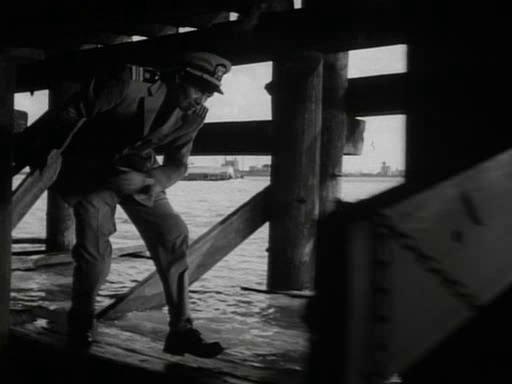
What Jules Dassin did for New York in 1948's The Naked City, using extensive location shooting to present a remarkable artefact of the city as it actually was at the time, Elia Kazan did for New Orleans in 1950 with Panic in the Streets. It's not an especially insightful movie into human nature, nor does it present a particularly interesting story, but it's a police procedural told with engrossing intelligence, performed by actors far superior to most of those in The Naked City, and every shot is beautifully complex and gritty.

You know, I haven't been seeking out Richard Widmark movies, I just somehow wound up seeing him a lot lately. Here, unusually for his career in the 1950s, he doesn't play a hood. He plays a military man in charge of the Public Health Service in New Orleans. He spends the movie trying to track down the men who murdered a guy who was infected with pneumonic plague, because somehow I guess finding them will prevent an epidemic. One would figure that after twenty four hours or so, the killers would've spread the disease to enough people it would be kind of a moot point, so I guess it functions more here as a sort of metaphor for the damage done to society by the criminal element.
Two of the killers, meanwhile, assume the cops are looking so hard for them because the guy they killed had been carrying something extremely valuable. The leader of this small gang is played by Jack Palance in his first role, whose character is pretty captivating despite being fairly uncomplicated. He's interesting not only because of Palance's effective, idiosyncratic performance but because, at such a young age, his face looks even weirder.

His face is rigid, like a mask, with his large facial bones, but his performance is still expressive. He really was unique.
Widmark's character is mostly concerned with getting city officials to take him seriously and with finding out where these criminals are. He does get a little subplot about his home life, presenting the typical conflict about the cop/doctor and the importance of his work versus his home life causing strain and anxiety with his wife, who in this case is played ably by Barbara Bel Geddes.

This is the first movie I can remember seeing her in outside of Vertigo and I see she was actually quite beautiful when she wasn't being made to look dowdy, though she still has that same smug, patronising (matronising?) delivery, always seeming to speak down her nose. It's not hard to see why Hitchcock wanted her as Midge.

Paul Douglas plays the police captain who works alongside Widmark for most of the movie. Douglas lends great presence to a not especially interesting character. It's an unpredictable movie as we follow the twists and turns of the chase that take us from one fantastically detailed location after another, the real grime and human existence seemingly carved from shadow by cinematographer Joseph MacDonald's great, expressionistic camera work.

The finale, a chase at the docks, is wonderful as Widmark and the cops pursue Palance through a cohesive maze of factories, warehouses, docks, and ships, all very obviously shot on location.


No comments:
Post a Comment